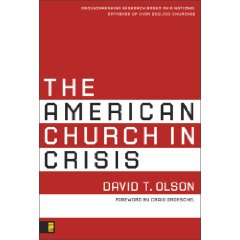The unaffiliated and the unattending

Baylor University's Institute for Studies of Religion reports that less than 11% of the US public considers themselves unaffiliated with any church or other religious group. That figure is about 4% -- or 10-million people -- less than previously thought. And, the unaffiliated hardly ever attend church -- about 89% of them answer "never" when asked how often they attend religious services. You can download the Baylor study here.
Could these unaffiliated be the "hardcore" unreached? What would it take to break through the unaffiliated facade. When you consider that 5% consider themselves atheists, the potential for breaking through this barrier becomes more difficult.
The other question we have to ask ourselves is -- Who are we reaching? Are we just trading members from one congregation to another? Is that a bad thing, and if not, what are the positives of "swapping" members?
Now here's another wrinkle -- weekly church attendance is now down to 17.5% of the population and declining. Apparently even those who say they are affiliated with a religious group are attending less and less. And, "regular" church participation now means "three out of eight Sundays" according to David Olson, in his book, The American Church in Crisis.
So, here's my question: Since there are fewer unaffiliated people than we thought, but fewer of the affiliated are attending regularly, what should we do? Should churches focus on retaining members as much as they do on reaching new people? What do you think and what is your church doing in one or both areas?



